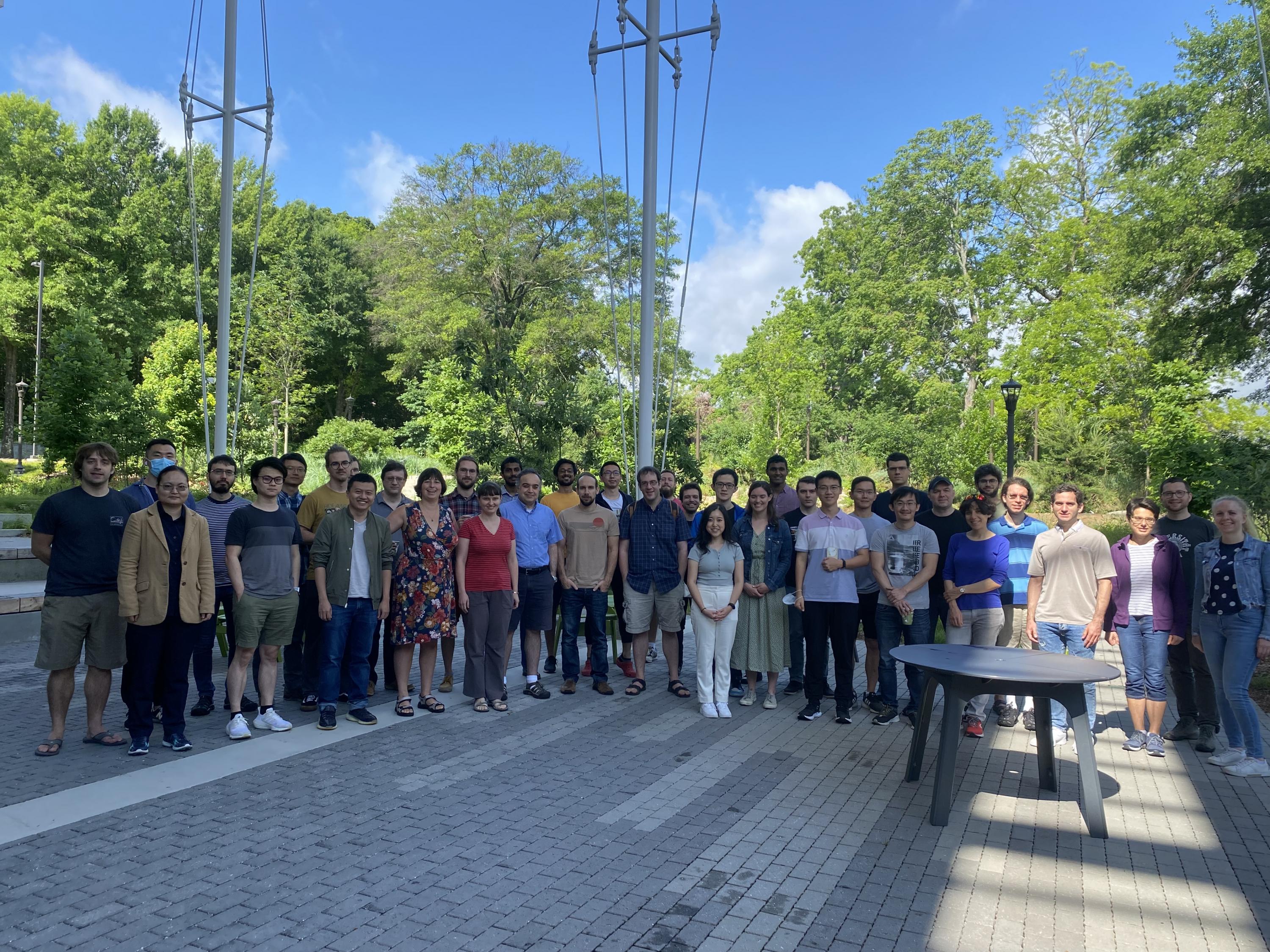- You are here:
- Home
Description: this workshop will feature six three-hour lecture courses. Several hours a day are allocated for research discussions in groups, on the topics broadly related to the lecture courses. The participants propose problems for discussion before and during the conference. Researchers at early stages in their career, such as graduate students, postdocs, and tenure track professors, are particularly encouraged to participate. There will also be short talks by junior participants, see the abstracts here. Previous edition of this workshop was held in December 2019.
Location: Georgia Tech campus, Kendeda building for Innovative sustainable design (the 28th building in the world to get the Living building certification) and Skiles building (the home of the School of Math). See more details and the room numbers on the schedule below. See also the interactive campus map, or this google maps screenshot.
The talks will be broadcast via Zoom: Zoom link for all the lectures
Schedule
Participant list
Lecturers:
Ilaria Fragala, Politecnico di Milano (speaking online via Zoom)
Topic: Rigidity results of Alexandrov type
Starting from the seminal result by Alexandrov for smooth sets with constant mean curvature, we shall revisit the classical version of the reflection or moving planes method. Then we shall discuss some recent rigidity results involving nonlocal or 'approximate' mean curvatures, which are obtained through a reinvention of this method, and may be of some interest from the points of view of geometric measure theory and convex geometry.Mohammad Ghomi, Georgia Institute of Technology
Topic: Geometric inequalities in spaces of nonpositive curvature
We will discuss total mean curvatures, i.e., integrals of symmetric functions of the principle curvatures, of hypersurfaces in Riemannian manifolds. These quantities are fundamental in geometric variational problems as they appear in Steiner’s formula, Brunn-Minkowski theory, and Alexandrov-Fenchel inequalities. We will describe a number of new inequalities for these integrals in non positively curved spaces, which are obtained via Reilly’s identities, Chern’s formulas, and harmonic mean curvature flow. As applications we obtain some new isoperimetric inequalities, and Riemannian rigidity theorems. This is joint work with Joel Spruck.Ramon van Handel, Princeton University
Topic: Nonasymptotic random matrix theory
Suppose we are given a random matrix with an essentially arbitrary pattern of entry variances, dependencies, and distributions. What can we say about its spectrum? Until recently, it would have seemed hopeless to obtain anything but crude information at this level of generality (e.g., estimating the range of the spectrum up to logarithmic dimensional factors). The aim of my lectures is to describe a new theory that provides exact nonasymptotic information on the spectrum in an extremely general setting. This is made possible by an unexpected phenomenon: the spectra of essentially arbitrarily structured random matrices turn out to be accurately captured by certain models of free probability theory under surprisingly minimal assumptions. (Based on joint works with Afonso Bandeira, March Boedihardjo, and Tatiana Brailovskaya.)Emanuel Milman, Technion I.I.T. and Oden Institute, UT Austin
Topic: Isoperimetric Multi-Bubble Problems - Old and New
In 2000, Hutchings, Morgan, Ritore and Ros resolved the Double-Bubble conjecture in Euclidean space R^3 (and this was subsequently resolved in R^n as well) -- the optimal partition into two bubbles of prescribed finite volumes (and an exterior unbounded third bubble) which minimizes the total surface-area is given by three spherical caps, meeting at 120-degree angles. A more general conjecture of J. Sullivan from the 1990's asserts that when q is less than n+3, the optimal Multi-Bubble partition of R^n (as well as the sphere) is obtained by taking the Voronoi cells of q equidistant points in the sphere and applying appropriate stereographic projections to the whole space (and backwards).
In 2018, together with Joe Neeman, we resolved the analogous Multi-Bubble conjecture on the optimal partition of Gauss space into less than n+2 bubbles -- the unique optimal partition is given by the Voronoi cells of (appropriately translated) q equidistant points. In this series of talks, we will describe our approach in that work, as well as recent progress on the Multi-Bubble problem on R^n and the sphere. In particular, we show that minimizing partitions are always spherical when the number of parts is less than n+2, and we resolve the latter conjectures when in addition q is less than 7 (e.g. the triple-bubble conjecture in R^3 and the 3-dimensional sphere, and the quadruple-bubble conjecture in R^4 and S^4).
Based on joint work (in progress) with Joe Neeman.Tatyana Shcherbina, University of Wisconsin-Madison
Topic: Supersymmetry techniques in random matrix theory
Konstantin Tikhomirov, Georgia Institute of Technology
Topic: Smoothed and average-case analysis of matrix computations
Abstract: We will discuss stability of certain matrix computations in the average case (when the matrix entries are assumed to be i.i.d) and in the setting when a fixed matrix is perturbed by a small random noise.
Organizers: Galyna Livshyts glivshyts6@math.gatech.edu, Orli Herscovici orli.herscovici@gmail.com, Han Huang han.huang@math.gatech.edu.
Event Details
Date/Time:
-
Monday, May 23, 2022 - 9:00am to 7:00pm

